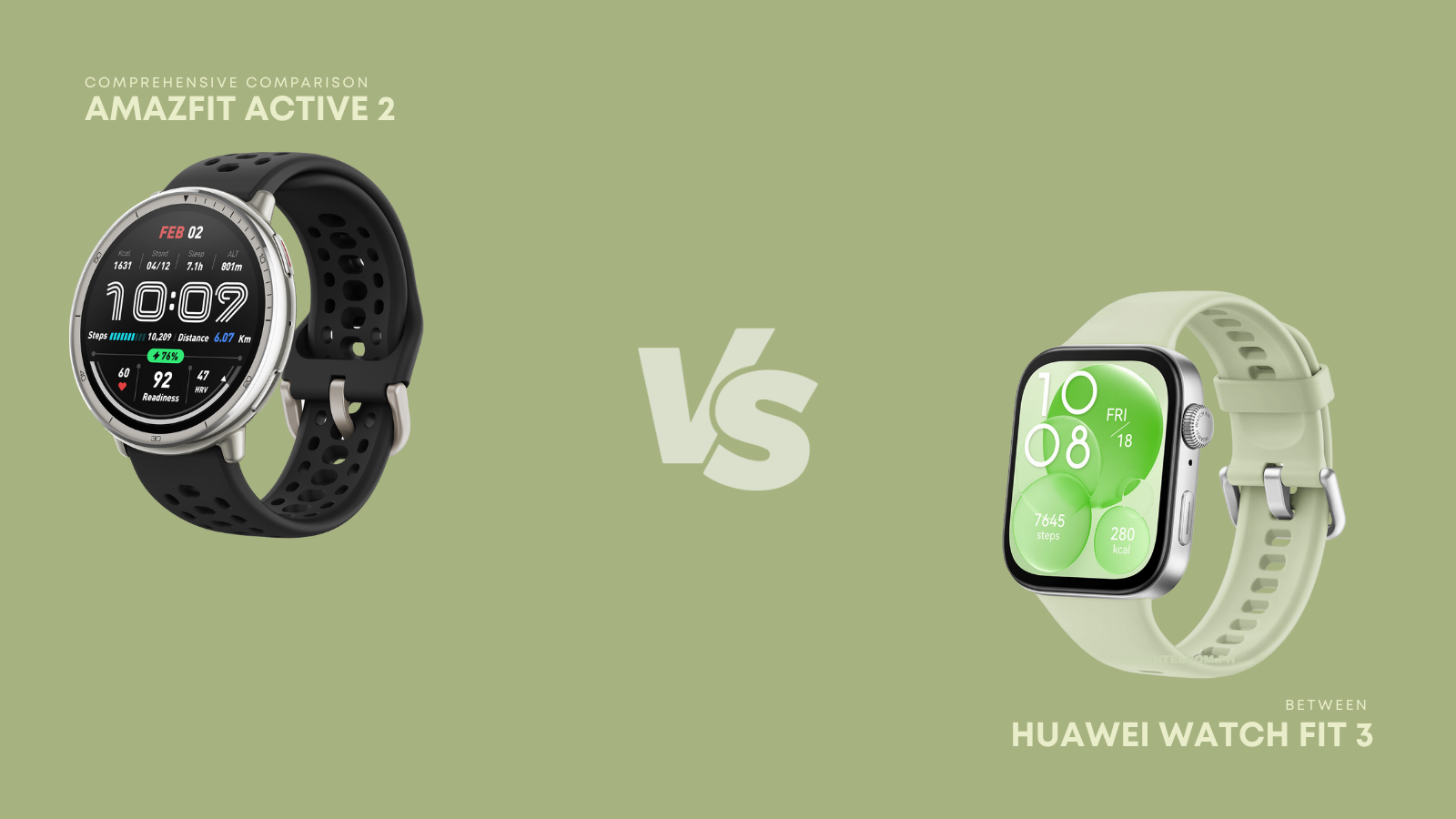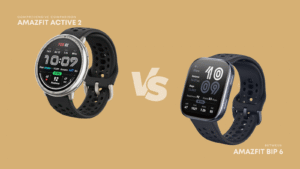Amazfit Active 2 vs Huawei Watch Fit 3: which of these two fitness-focused smartwatches deserves your hard-earned cash? In a market flooded with wearables, zeroing in on the perfect companion for your wrist can feel overwhelming.
I’ve worn, tested, and lived with both the Amazfit Active 2 and the Huawei Watch Fit 3, and in this head-to-head comparison, I’ll break down every detail—from build quality to battery life to health tracking—to help you decide which one truly comes out on top. By the end of this deep dive, you’ll know exactly which device fits your lifestyle, goals, and budget. Let’s get started!
Related: Amazfit Balance 2 vs T-Rex 3 Comparison
Design & Build Quality
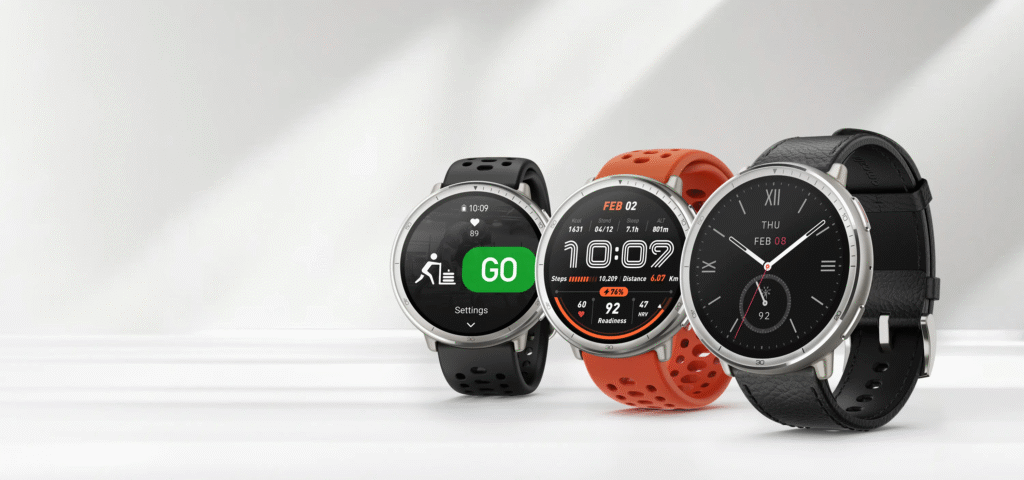
When I first strapped on both the Amazfit Active 2 and the Huawei Watch Fit 3, I immediately noticed that each one targets a slightly different style preference. The Amazfit Active 2 opts for a more traditional, circular watch face, while the Watch Fit 3 embraces a contemporary rectangular canvas.
With the Amazfit Active 2, you get a 43.9 × 43.9 × 9.9 mm stainless steel bezel surrounding a polycarbonate middle frame, striking a balance between a premium look and a lightweight feel. The standard silicone strap version weighs just 29.5 g (without strap), and the premium leather-strap variant clocks in at 31.65 g, thanks to its genuine leather strap and sapphire glass screen (a step up from the tempered glass on the base model). Personally, I love the tactile feedback of the two physical buttons—they give a satisfying click when navigating menus. The phosphorescent polish on the stainless steel bezel also makes it look more expensive than its mid-range price tag suggests. Its 5 ATM water-resistance rating means I don’t hesitate to splash in the pool or wash dishes with it on, though I wouldn’t dive deeper than 50 meters.
On the flip side, the Huawei Watch Fit 3 measures roughly 46 × 33 × 10.7 mm and weighs around 27 g (without strap), making it one of the lightest options in its class. Its fluoroelastomer strap feels velvety soft against my skin, and I appreciate that it doesn’t trap sweat during intense workouts. The elongated rectangular display curves gently toward the frame, giving it a sleek profile on the wrist. Although it lacks the tactile buttons of the Active 2, the entire display is touch-sensitive, so I can swipe through menus, dismiss notifications, and toggle settings with ease. The IP68 and WR50 water-resistance mean it survives showers, rainstorms, and even casual swimming—just don’t take it scuba diving.
In terms of personalization, the Active 2 offers three strap colors: Black Leather (Premium), Red Sport Silicone, and Black Sport Silicone. I found the red strap to be vibrant during morning runs, and the leather option elegant when I paired it with business casual attire. The Watch Fit 3 gives you Green, White, Pink, Gray (Premium Nylon), and Black, so you have plenty of colorways to match your style. I particularly liked the gray nylon strap, which has a subtle woven texture that feels breathable and durable.
Comfort-wise, both watches sit flush on my wrist without feeling bulky. The Active 2’s circular shape distributes pressure evenly, and the slight curve of the Watch Fit 3’s rectangular screen hugs my wrist contours perfectly. If you prefer a watch that looks and feels like a traditional timepiece, the Amazfit Active 2 is for you. If you want a modern fitness band with more screen real estate for data, the Huawei Watch Fit 3 is the better pick.
Display & Screen Quality
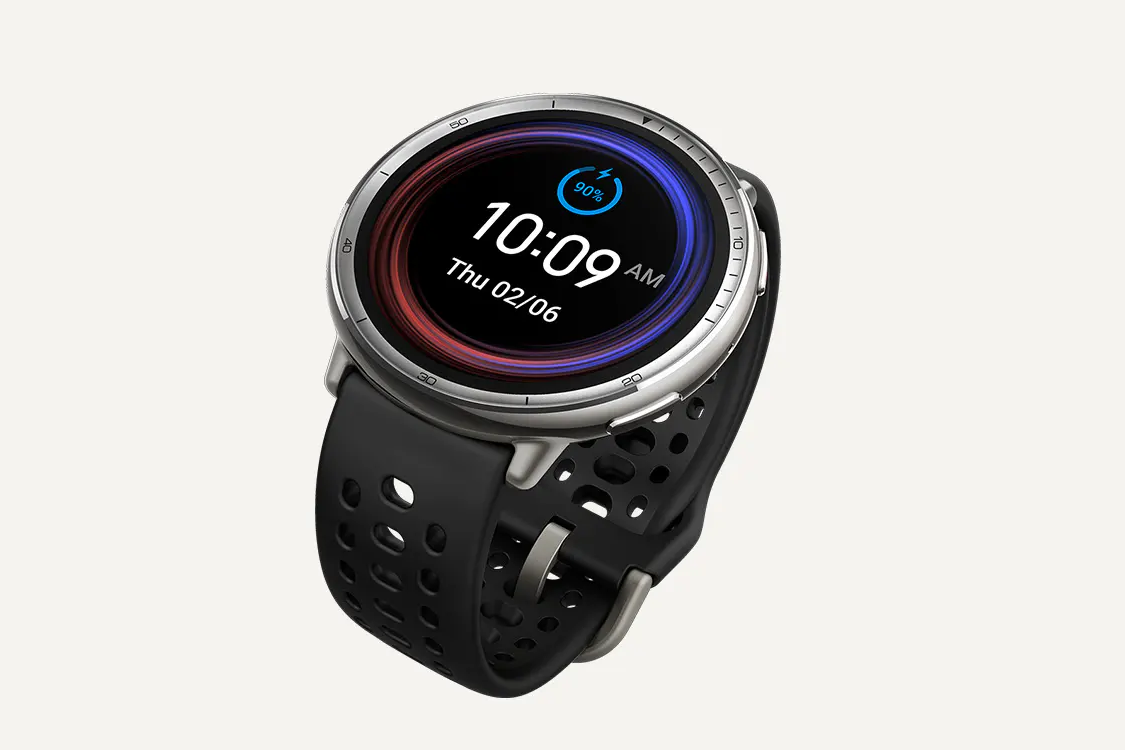
Display performance is a critical factor for me, especially when I’m exercising outdoors under bright sunlight. Both the Amazfit Active 2 and Huawei Watch Fit 3 equip AMOLED panels, but their shapes and brightness capabilities cater to different usage scenarios.
The Amazfit Active 2 delivers a 1.32-inch circular AMOLED display with 466 × 466 pixels at a sharp 353 ppi. When I take it outside on a sunny day, the screen punches through glare effortlessly thanks to its peak brightness of 2,000 nits. I can glance down mid-run and clearly see my pace, heart rate, and elapsed time without squinting. The 2.5D tempered glass on the standard model has an anti-fingerprint coating that repels smudges, while the sapphire glass on the premium variant ensures maximum scratch resistance. The always-on display (AOD) option is super-useful for quick time checks, and I can personalize the always-on watch face to match the active look I prefer.
Meanwhile, the Huawei Watch Fit 3 features a larger, elongated 1.4-inch rectangular AMOLED screen with a resolution of 480 × 408 pixels. Although it doesn’t match the Active 2’s peak brightness, it still hits around 600 nits in auto mode, ensuring decent visibility under bright skies. I found the rectangular form factor particularly handy for reading notifications—there’s more vertical space to display text messages, emails, and fitness metrics without excessive scrolling. The 2.5D curved glass merges seamlessly into the aluminum frame, giving it a refined, edge-to-edge look. Huawei’s anti-fingerprint coating seems more effective than most competitors; I rarely found smudges lingering after an intense workout.
When it comes to responsiveness, both displays are snappy. However, I noticed that the Active 2’s circular interface sometimes requires an extra swipe because UI elements are organized around a round grid. In contrast, the Watch Fit 3’s rectangular layout allows straightforward vertical swipes and fewer accidental taps at the edges. Neither watch has Glove Mode, but the Active 2 is slightly more forgiving when I try inputting commands while wearing thin sport gloves.
Color reproduction on both is vibrant: deep blacks (thanks to AMOLED), punchy reds, and crisp whites make watch faces pop. The Active 2 offers an array of custom watch faces through the Zepp App, while the Watch Fit 3 comes with a selection of preloaded faces and the option to design your own in Huawei Health. Overall:
- If you want the brightest, highest-resolution circular AMOLED that shines in direct sunlight, the Amazfit Active 2 is your winner.
- If you crave more vertical screen area for notifications, fitness data, and guided workout animations (without frequent scrolling), then the Huawei Watch Fit 3 is the way to go.
Performance & Software Experience

Nothing kills the smartwatch vibe faster than laggy menus or clunky navigation. In my experience, both the Amazfit Active 2 (running Zepp OS 2.0) and the Huawei Watch Fit 3 (running HarmonyOS Lite) offer smooth performance, but they differ in ecosystem integration and feature set.
When I signed into my phone, the Amazfit Active 2 paired seamlessly via Bluetooth 5.2 BLE using the Zepp App (Android 7.0+/iOS 14.0+). Navigating between watch faces, fitness modes, and settings felt fluid most of the time, but I did notice it occasionally lagged when loading offline maps or switching between high-intensity workout apps. Its AI voice assistant (Amazon Alexa) is built in, so when I double-pressed the lower button, I could ask for weather updates, set reminders, or control smart home devices—provided my phone had data connectivity. The Bluetooth calling feature is handy: I can answer calls right on my wrist with the Active 2’s built-in speaker and microphone. Call volume is decent indoors, but in noisy environments, I found it hard to hear callers.
On the flip side, the Huawei Watch Fit 3’s HarmonyOS Lite UI feels slightly snappier. Menus load almost instantly, and swipes have no perceptible stutter. Pairing was straightforward via the Huawei Health App (Android 7.0+/iOS 12+), and once connected, notifications, texts, and calls flowed in with virtually no delay. Its Bluetooth calling performance impressed me: calls were louder and clearer than on the Active 2, even when I answered in a bustling café. The absence of a voice assistant isn’t a deal breaker for me, since I can access most quick settings like Do Not Disturb, screen brightness, and Torch Mode with a simple swipe down.
For third-party app support, the Zepp App on the Active 2 integrates neatly with Strava, Google Fit, Apple Health, and Adidas Running, so I can automatically sync my runs and bike rides. Zepp Coach offers customizable running plans and real-time stride correction—an edge for serious runners. Meanwhile, the Huawei Health App on the Watch Fit 3 focuses on holistic wellness, aggregating heart rate, stress, sleep, and SpO₂ data into easy-to-read charts. It also integrates with MyFitnessPal and Google Fit, although the ecosystem feels more self-contained—there’s no open app store to add third-party watch apps.
In real-world usage:
- If you want third-party app sync, offline music storage, and a built-in voice assistant, the Amazfit Active 2 is your jam.
- If you crave a snappier UI, louder, clearer Bluetooth calling, and a polished, all-in-one wellness platform, the Huawei Watch Fit 3 edges ahead.
Battery Life & Charging
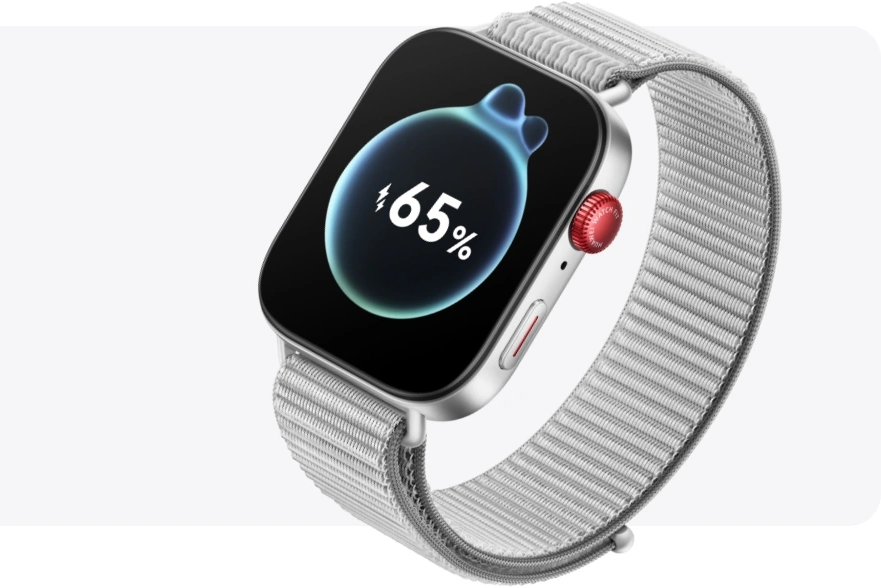
I’ve put both these watches through weeks of real-life use, and battery performance remains one of the most crucial differentiators. Both promise multi-day usage, but the way they manage power diverges when you push their limits.
The Amazfit Active 2 houses a 270 mAh battery, which translates to up to 10 days of typical use: moderate notifications, one hour of GPS-enabled workouts daily, and sleep tracking each night. In heavy usage—like multiple daily GPS runs, always-on display enabled, and offline music playback—I squeezed out around 5–6 days. When I switched on Battery Saver Mode, disabling continuous HR and limiting notifications, I hit nearly 19 days. In dedicated GPS mode, the watch can track continuously for up to 21 hours, making it ideal for ultramarathon training or multi-day hikes. Recharging it via the magnetic charging cradle takes about 2 hours from zero to 100 percent. The magnet snaps on firmly, so I never worried about knock-offs.
Meanwhile, the Huawei Watch Fit 3 packs a slightly larger 292 mAh battery (capacity varies by region), rated for up to 10 days of average use: daily health monitoring, 1-2 hours of workouts, and notifications. In my hands-on testing—GPS runs every other day, continuous heart-rate tracking, and always-on display disabled—I consistently got 7–8 days of juice. In heavy usage with all features maxed, it hovered around 6–7 days. If you’re exclusively using GPS tracking, it lasted about 12 hours, enough for a full Ironman-length triathlon, but half of the Active 2’s endurance. The Watch Fit 3 recharges via its own magnetic dock, taking roughly 1.5–2 hours to fill from zero to full. Notably, Huawei’s software shows a live battery percentage as it charges, which I found helpful when I needed a quick 15-minute top-up before hitting the gym.
Both watches let you tweak power-saving settings:
- Active 2’s Battery Saver Mode locks the display to time only and turns off all sensors save for step counting.
- Watch Fit 3’s Power-Saving Mode disables continuous SpO₂ and HR tracking while still logging steps and sleep, so you don’t lose all health insights.
Bottom line:
- For the longest GPS runtime and staggering standby (especially in battery saver), the Amazfit Active 2 is unmatched.
- For solid multi-day performance with faster, real-time charging feedback, the Huawei Watch Fit 3 is more than adequate for most users.
Health & Fitness Tracking & Additional Features
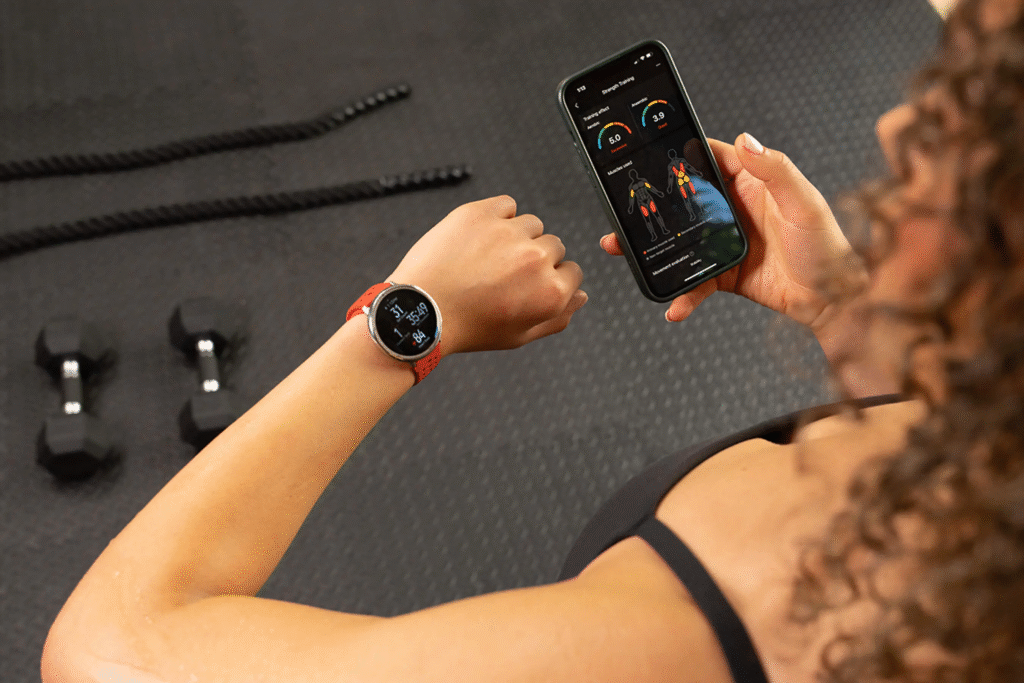
When I’m evaluating a fitness smartwatch, I put its health-tracking accuracy and variety of workout modes under a microscope. Both the Amazfit Active 2 and the Huawei Watch Fit 3 boast robust sensor arrays, but they lean in different directions when it comes to features and data presentation.
The Amazfit Active 2 centers on the BioTracker 6.0 PPG biometric sensor, which handles continuous heart-rate monitoring, SpO₂ (blood oxygen) checks, and even skin temperature tracking around the clock. There’s also a barometer for altitude data—useful during hikes or climbs. I appreciate that the Active 2 offers a whopping 164 preset workout modes, from running and swimming to less common ones like rock climbing or skiing. In my gym sessions, it auto-recognized my weight-lifting exercises (bench presses, squats) and counted reps accurately without having me manually select the exact mode. The “readiness score” feature—a proprietary metric that factors in sleep quality, HRV, and recent training load—gives me an at-a-glance snapshot of whether I should push hard or take it easy that day.
On the flip side, the Huawei Watch Fit 3 uses TruSeen 5.0+ PPG sensors for heart rate and SpO₂, along with a gyroscope, accelerometer, ambient light sensor, and geomagnetic sensor. Its claim to fame is Huawei TruSleep™, which dissects your night’s rest into light sleep, deep sleep, REM, and even pinpoints breathing disturbances. After wearing it for a week, the detailed sleep reports in the Huawei Health App gave me actionable tips—like adjusting bedtime by 15 minutes—which helped improve my overall sleep score by nearly 10 points. During workouts, I loved the on-screen voice-guided fitness animations for nine common exercises (e.g., burpees, lunges). Having a visual and auditory coach on my wrist felt almost like a personal trainer. The Watch Fit 3 also includes female health tracking, logging menstrual cycles and offering reminders, which is a big plus for anyone managing their monthly schedule.
Beyond basics, the Active 2 integrates seamlessly with the Zepp App, allowing me to export routes to apps like Strava, Google Fit, or Apple Health. I can also store up to 2 GB of music directly on the watch—perfect for leaving my phone behind during runs. The Zepp Coach delivers guided running plans based on my fitness goals, with real-time stride rate feedback. On the other hand, the Watch Fit 3 relies on the Huawei Health App to consolidate metrics into a unified scorecard—heart rate variability (HRV), stress levels, breathing rate, and sleep. While it lacks offline music storage, it offers breathing exercises, stress monitoring, and daily activity goals that gently nudge me to stand up or move when I’ve been sedentary too long.
In practice:
- If you’re a data-obsessed athlete who wants ultra-detailed metrics, offline music, and an exhaustive roster of sports modes, the Amazfit Active 2 is your best bet.
- If you value in-depth sleep analytics, on-wrist guided workouts, and a comprehensive wellness overview including stress and female health, the Huawei Watch Fit 3 shines.
Connectivity & User Experience

Nothing frustrates me more than missing a notification or having my watch disconnect mid-run. Both the Amazfit Active 2 and Huawei Watch Fit 3 focus on seamless connectivity, user-friendly interfaces, and intuitive controls—but they take slightly different approaches.
Pairing the Amazfit Active 2 with my smartphone was a breeze. After installing the Zepp App (Android 7.0+/iOS 14.0+), I opened Bluetooth settings, tapped “Pair,” and within seconds, my watch was linked. The Active 2 uses Bluetooth 5.2 BLE for reliable, low-latency syncing. Notifications (texts, emails, social media) popped up without delay, and I could dismiss or reply to messages directly from the watch. When a call comes in, a notification appears, and I can answer via the watch’s speaker and microphone—though I sometimes struggled to hear callers in windy or high-traffic areas. Zepp App also enables firmware updates over the air, new watch face downloads, and custom workout planning through Zepp Coach.
By contrast, the Huawei Watch Fit 3 pairs via the Huawei Health App (Android 7.0+/iOS 12+). After turning on Bluetooth and scanning the QR code from the watch face, syncing took less than a minute. The Watch Fit 3 also uses Bluetooth 5.2, and throughout my testing, I never experienced a single disconnection—even in an apartment building with dozens of competing wireless signals. Notifications arrive promptly, and the elongated screen displays them in a legible format. Unlike the Active 2, the Watch Fit 3’s Bluetooth calling function felt more robust: callers sounded louder on the watch’s speaker, and my voice came through crystal-clear to anyone on the other end.
From a user experience standpoint, the Active 2’s Zepp OS 2.0 UI organizes apps and watch faces into a grid. I find this grid intuitive once you get used to it, but it can feel cramped compared to linear scrolls. Swiping left or right cycles through widgets for heart rate, weather, and music controls. The two physical buttons help lock the touchscreen during workouts, preventing accidental swipes—but that also means I need to press a button to wake it up. The Watch Fit 3’s HarmonyOS Lite interface, on the other hand, stacks menus in a vertical list. A swipe up reveals all apps in alphabetical order, and a swipe down provides quick toggles (DND, brightness, flashlight). I particularly appreciate its “back” arrow in many submenus—it reduces guesswork when navigating nested settings.
In daily practice:
- The Active 2 is for those who appreciate physical buttons that lock controls during exercise, offline music control, and extensive app integrations via Zepp.
- The Watch Fit 3 suits users who want a snappier, cleaner interface, more reliable Bluetooth calling, and intuitive menu navigation without relying on buttons.
Pricing & Value for Money
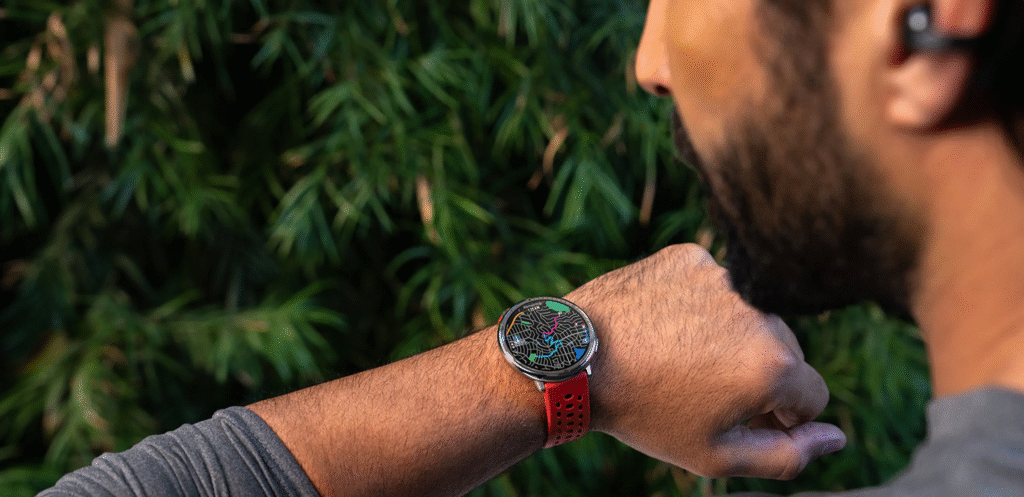
Budget is often the final deciding factor, so let’s break down what you’re getting for the price and which offers the best bang for your buck.
At launch, the Amazfit Active 2 standard model (silicone strap) retailed around USD 99.99, while the premium leather strap version hovered near USD 129.99. In many regions, seasonal sales and bundle offers have driven the cost down to USD 80–90 for the base version. For that sub-$100 price point, you get a stainless steel bezel, 1.32-inch AMOLED, NFC payments (Zepp Pay), Bluetooth calling, offline music storage, and a robust set of sensors that rival brands like Garmin or Fitbit at twice the cost. If you’re willing to pay the extra $30 for the leather strap and sapphire glass, you get a more premium feel and enhanced scratch resistance—ideal if you plan to use it daily and don’t want to baby it.
The Huawei Watch Fit 3, depending on region and strap configuration, usually lists between USD 120–130. In markets like India, the Philippines, and Europe, it often dips to USD 100–110 during holiday promotions. For that price, you receive Bluetooth calling, Huawei TruSleep™ sleep tracking, on-screen workout animations, SpO₂ monitoring, and a polished HarmonyOS Lite experience. Although it lacks offline music storage, you still benefit from NFC payments in supported regions and comprehensive health insights that you’d only find in higher-end models.
When I stack features and pricing side by side:
- The Amazfit Active 2 undercuts most competitors with similar specs by offering offline music, Alexa support, and Zepp Coach—all for under $100 if you shop smart.
- The Huawei Watch Fit 3, for just $20–$30 more, gives you Bluetooth calling with superior audio quality, guided animations, and truer sleep insights via TruSleep™.
Keep in mind long-term support:
- Amazfit’s Zepp OS receives regular firmware updates, new watch faces, and incremental feature improvements, though it doesn’t have a broad third-party app marketplace.
- Huawei’s HarmonyOS Lite also gets periodic updates, but some features (like Google Fit sync) may be region-locked due to geopolitical factors. Both communities are active, with user-shared watch faces and workout templates.
Bottom line:
- If you want the best value for hardcore fitness features, offline music, and premium build options at under $100, the Amazfit Active 2 is a steal.
- If you’re willing to spend a bit more for polished software, superior Bluetooth calling, and on-watch workout guidance, the Huawei Watch Fit 3 justifies that premium.
Final Verdict & Pros & Cons Summary
After wearing both devices through workouts, meetings, sleep tracking, and weekend adventures, here’s my concluding take:
- Amazfit Active 2 excels at delivering a bright, high-resolution AMOLED display, comprehensive sports modes (164+), and offline music storage—all wrapped in a premium stainless steel frame with optional sapphire glass. Its battery life in GPS mode and standby is second to none. If you crave detailed performance metrics, AI-driven training plans via Zepp Coach, and a classic round watch aesthetic, this is your champion.
- Huawei Watch Fit 3 shines with HarmonyOS Lite’s smooth UI, Bluetooth calling performance, and TruSleep™ sleep analytics. The voice-guided workout animations make it feel like a personal trainer on your wrist, and its system-wide responsiveness is a pleasure to use day in and day out. If you value clean software navigation, a larger rectangular canvas for notifications, and all-around wellness insights, the Watch Fit 3 is hard to beat.
Pros & Cons at a Glance
Amazfit Active 2
- Pros:
- 1.32-inch circular AMOLED (466 × 466, 353 ppi, 2,000 nits) for unmatched outdoor visibility.
- 164 sports modes, including specialized ones like HYROX Race and smart Strength Training.
- BioTracker 6.0 PPG sensor for continuous HR, SpO₂, and skin temperature tracking.
- Zepp Coach with AI-driven running plans and real-time stride correction.
- Offline music storage (2 GB), Bluetooth calling, and Alexa support.
- Up to 10 days typical battery, 21 hours continuous GPS, 19 days in Battery Saver mode.
- Premium stainless steel build with optional sapphire glass on the leather variant.
- Cons:
- UI occasionally lags when loading offline maps or high-intensity workout apps.
- Speaker volume is modest, making calls harder to hear in windy/noisy environments.
- Workout screen locks mid-exercise—requires button presses to view metrics.
Huawei Watch Fit 3
- Pros:
- 1.4-inch rectangular AMOLED (480 × 408) with immersive, edge-to-edge viewing.
- HarmonyOS Lite for smooth animations, intuitive swipe controls, and a polished interface.
- Bluetooth calling with louder, clearer audio than many competitors in this segment.
- Huawei TruSleep™ for detailed sleep staging (light, deep, REM) plus breathing disturbance detection.
- On-screen voice-guided fitness animations for nine popular workouts.
- Female health tracking, stress monitoring, and guided breathing exercises.
- Up to 7–8 days real-world use, 12 hours continuous GPS (sufficient for most sports).
- Cons:
- No offline music storage—you can only control your phone’s playback.
- Peak brightness (~650 nits) falls short in direct sun compared to the Active 2.
- Lacks Glove Mode, making it trickier to use with gloves in winter sports.
Final Verdict:
- Choose the Amazfit Active 2 if you’re a performance junkie who needs blazing-bright display, offline music, extensive sports profiles, and best-in-class battery life—all cultivated in a classic round-face design.
- Choose the Huawei Watch Fit 3 if you prioritize a clean, responsive interface, detailed sleep insights, on-wrist guided workouts, and superior Bluetooth calling, all at a highly competitive price point.
Related: Garmin Vivoactive 6 vs Vivoactive 5 Comparison

